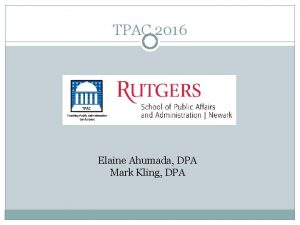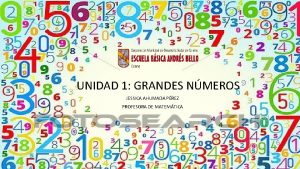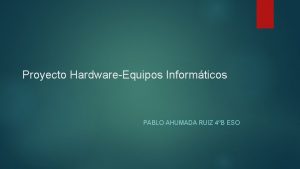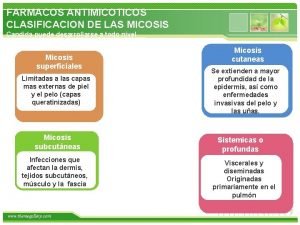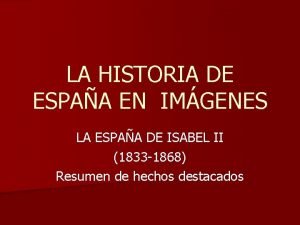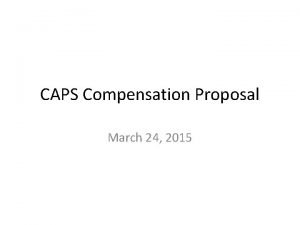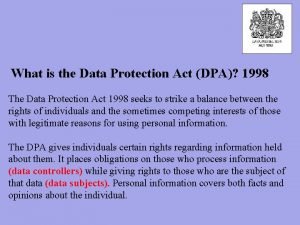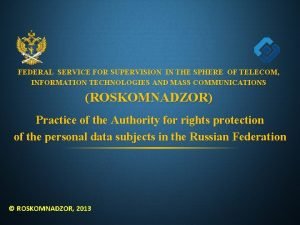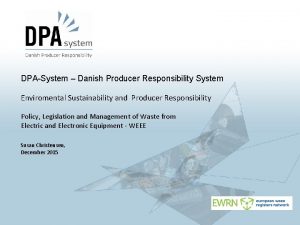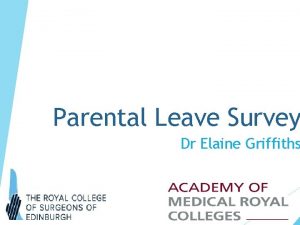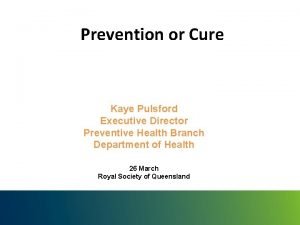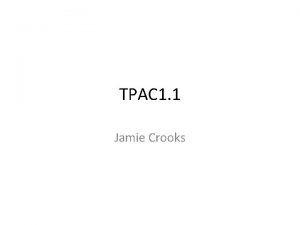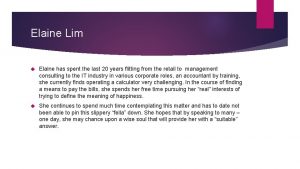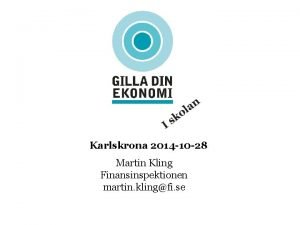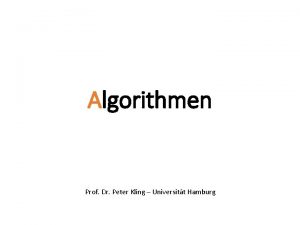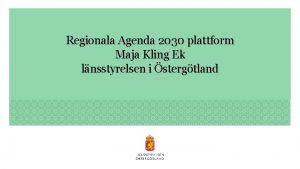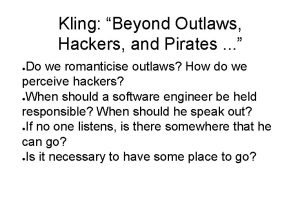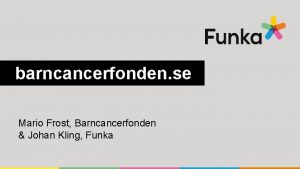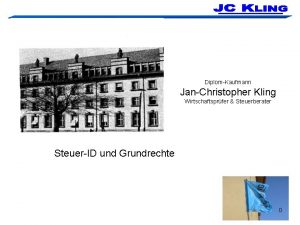TPAC 2016 Elaine Ahumada DPA Mark Kling DPA
















- Slides: 16

TPAC 2016 Elaine Ahumada, DPA Mark Kling, DPA

The Use of “Critical Incident Reflection Frameworks” Through Inquiry Based Learning in Online Courses to Professionally Develop Public Sector Practitioners

Inquiry Based Learning � Adults, through experiences, build a reservoir of prior knowledge that they continue to develop as they learn more skills and information (Knowles, 1984). � Adult learners have a larger knowledge base than younger students. Having a larger knowledge-base, related to the topic can be an asset because the adult has more in his or her reservoir (Knowles, 1984). � During reflections, learners are able to connect to their strengths and weaknesses as they examine their actions within a safe environment of the professional development setting (Glaze, 2002). �

Why Reflection? �Reflection is deeper than popular notions of ‘thinking’ �Critical reflection is based on an understanding of the individual in social context and links between individual and society �Critical reflection is both a theory and a practice �Critical reflection links changed awareness with changed action

Critical Incident Reflection ……. . �Identifies common issues of powerlessness, fear, complexity. �Identifies organizational responses regarding rules and regulations, focus on parts as opposed to the whole, focus on outcomes. �Identifies resulting issues regarding value based practice and economically/technically focused orgs. �Identifies the need to continually develop knowledge and practice.

Critical Incident Reflection Frameworks Uncertainty, Risk, and Complexity �Provides both theory and processes to enable making and remaking of knowledge to happen. �Critical reflection provides a framework that enables managing: stresses, core values, and implications for practice.

Aspects of Critical Incident Reflection Frameworks �Process examining assumptions using a facilitated process in a safe learning environment �Theoretical framework – the individual in their social context �Purpose – bringing about social change/awareness �Setting – nurtures professional development.

Theoretical Considerations of Critical Incident Reflection The reflective approach to theory and practice �Reflexivity : cause and effect �Postmodernism: language and logic �Deconstruction: understanding of relationships between “A and B”, meaning and perceptions. �Critical social theory: critique of society and culture

Critical Reflection goals �Facilitate small groups �Focus on individual practice �Build reflective practice skills �Evaluate organizational assumptions �Address specific / real-world experiences �Uncover new approaches to practice �Build a trusting, professional, and collegial environment

Framework �The What: who, what, why, when, where? �So What: significance, role, viewpoint, actions, meaning �Now What: evaluation of process. What would be different in the future? Lessons learned? “How will you approach it differently?

Outcomes �Foster accountable self-awareness �Train and graduate a reflective scholar/practitioner �Improve proper decision-making skills among public sector professionals

MPA Examples MPA 580: Ethics and Decision-Making Week 6: Critical ethics assessment: City council role playing session Critical reflection provides a framework that enables managing practitioner stresses, visits org core values, and implications for public service practice.

Rubric Criteria for Assessment � Random assignment of public service roles, including council, city attorney, city manager, department heads, community members. � Analysis of ethical dilemmas within the scope of public sector leadership and decision-making. � Practitioner reflection of an agenda item with real world ethical imperatives. � Role players are required to frame the case and argue ethical outcomes to well informed public sector actors utilizing reflective ethical theory and practices.

DPA Example DPA 720: Ethics and Social Justice 8 Week journal : Critical assignment Reflect upon a decision that did or did not result in the anticipated outcome, what was evident in the process that affected how you addressed the issue and ultimately impacted the intended goal? �Depict the decision-making process as an illustrative model.

Rubric Criteria for Assessment �Analysis and articulation of ideas within the scope of public sector leadership, ethics, and decision-making. �Depth and understanding of the case and ethical imperatives involved from a well informed public sector practitioner as well as theoretical context.

References Flanagan, J. C. The critical incident technique. Psychological Bulletin. , 1954, Vol. 51 No. 4. Fook, Jan and Gardner, Fiona (2007). Practising critical reflection; A resource handbook. England. Open University Press. Garet, M. , Porter, A. C. , Desimone, L. , Birman, B. F. , & Yoon, K. S. (2001). What makes professional development effective? Results from a national sample of teachers. American Educational Research Journal, 38(4), 915 -945. Piaget, J. (1985). The equilibrium of cognitive structures. Chicago, IL: University of Chicago Press. Trotter, Y. D. (2006). Adult learning theories: Impacting professional development programs. Delta Kappa Gamma Bull, 72 (2).
